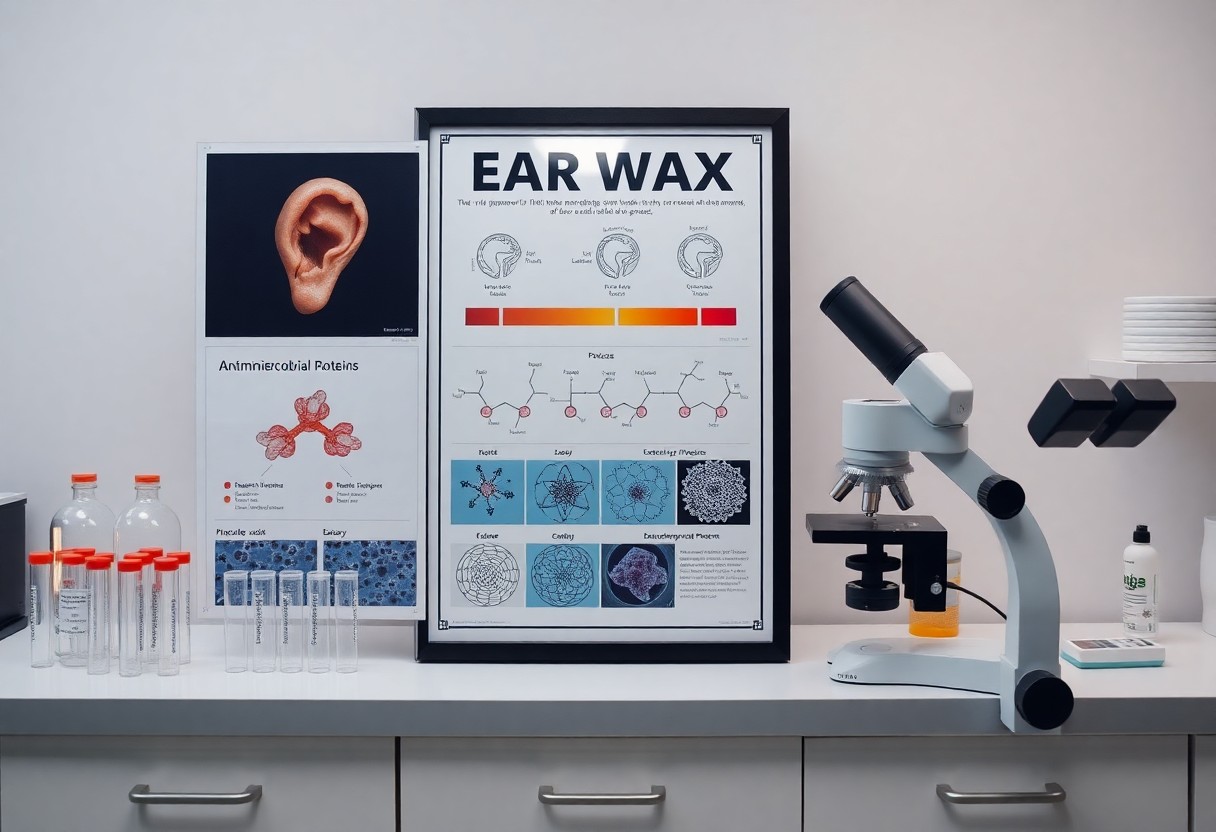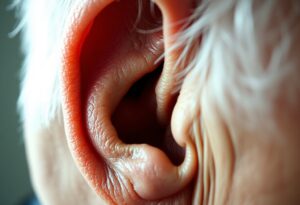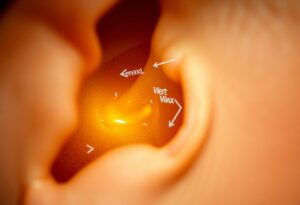Many factors influence your ear health, including the pH levels and the presence of antimicrobial proteins in earwax. Understanding these elements can help you appreciate the complex microbiological environment of your ears. This post will research into how the acidity of earwax contributes to its antimicrobial properties, safeguarding against infections and maintaining an optimal balance of ear flora. Join us as we explore the significant role that ear pH and antimicrobial proteins play in your ear health.

Key Takeaways:
- The pH of ear wax plays a significant role in maintaining ear health by influencing microbial populations.
- Antimicrobial proteins found in ear wax contribute to the defense against infections and protect the ear canal.
- Understanding the interaction between ear pH and antimicrobial proteins can aid in developing treatment strategies for ear-related issues.

The Biological Role of Ear Wax: More Than Just a Barrier
Composition of Ear Wax
Ear wax, or cerumen, is primarily composed of lipids and fatty acids, proteins, and antimicrobial compounds. The mixture typically includes long-chain alcohols, esters, and squalene, alongside various antimicrobial peptides that help combat pathogens. This unique composition not only contributes to the ear wax’s viscous nature but also plays a vital role in maintaining ear health.
Protective Functions in the Ear Canal
Ear wax serves as a natural barrier, trapping dust, debris, and microorganisms before they can reach the deeper parts of the ear canal. Additionally, it maintains a slightly acidic pH, creating an environment that inhibits the growth of harmful bacteria and fungi. This protective mechanism minimizes the risk of infections and supports overall ear health.
The protective functions of ear wax extend beyond mere physical barriers. Its sticky consistency prevents foreign particles from traveling further into the ear canal, while its antimicrobial properties actively neutralize pathogens that may enter. Studies show that the presence of specific proteins in ear wax can substantially reduce the incidence of common ear infections. Regular production and maintenance of adequate ear wax levels ensure that the ear canal remains a hostile environment for harmful microorganisms, promoting your auditory health efficiently.
pH Levels: The Balancing Act in Ear Health
Factors Influencing Ear Wax pH
Your ear wax pH can be influenced by several factors, including diet, age, and hygiene practices. While a typical pH range is around 6.0 to 7.0, variations can arise from the consumption of acidic or alkaline foods, which can shift the ear environment. Additionally, hormonal changes and skin conditions can alter the composition and pH balance of your ear wax.
- Dietary habits
- Age-related changes
- Skin conditions
- Hygiene practices
Knowing these factors helps you understand how personal choices can impact your ear health.
The Impact of pH on Microbial Growth
The pH level in your ears directly influences the growth of microbes. An acidic environment typically inhibits the growth of pathogenic bacteria and fungi, promoting a healthy balance of flora. A shift towards a more alkaline pH can create conditions that favor harmful microorganisms, leading to infections or other ear health issues. Studies have shown that an optimal pH can deter the growth of specific pathogens while allowing beneficial bacteria to thrive.
The Antimicrobial Arsenal: Proteins in Ear Wax
Types of Antimicrobial Proteins Present
Your ear wax contains several antimicrobial proteins that help protect against infections. These proteins can include defensins, lysozymes, and lactoferrin, each playing a unique role in immune defense.
- Defensins: Small peptides that disrupt microbial cell membranes.
- Lysozymes: Enzymes that break down bacterial cell walls.
- Lactoferrin: Binds iron, limiting bacterial growth.
- Histatins: Proteins that inhibit fungal growth.
- Growth factors: Help in skin regeneration, aiding overall ear health.
Knowing the types of proteins present can shed light on the importance of ear wax in your immune response.
| Protein Type | Function |
|---|---|
| Defensins | Disrupt microbial membranes |
| Lysozymes | Break down bacterial walls |
| Lactoferrin | Limits bacterial iron availability |
| Histatins | Inhibit fungal growth |
| Growth factors | Aid skin regeneration |
Mechanisms of Action Against Pathogens
Antimicrobial proteins in your ear wax work through various mechanisms to combat pathogens. By disrupting cell membranes, degrading structural components, or sequestering crucial nutrients, these proteins hinder pathogen survival and replication.
For instance, defensins and lysozymes directly target bacterial integrity while lactoferrin deprives bacteria of iron, which is vital for their growth. Together, they create an inhospitable environment for harmful organisms, enhancing your ear’s ability to fend off infections. This multi-faceted approach is key to understanding how ear wax contributes to your overall ear health and microbiological defenses.
The Microbiome of the Ear: A Delicate Ecosystem
The Role of Ear Wax in Microbiome Diversity
Your ear wax plays an necessary role in maintaining a diverse microbiome within the ear. By trapping debris and microorganisms, it provides a unique environment where beneficial microbes thrive while also limiting pathogenic organisms. This diversity can help prevent infections by creating competition among microbial populations, ultimately supporting ear health and functioning as a first line of defense against external threats.
How Microbial Communities Influence Ear Infections
Ear infections tend to arise when there is an imbalance in your ear microbiome, leading to pathogenic overgrowth. Factors like changes in ear wax composition or pH levels can disrupt the microbial balance, allowing harmful bacteria such as Streptococcus pneumoniae to proliferate. This bacterial shift is often linked to conditions like otitis media, where the protective role of beneficial microbes diminishes, culminating in inflammation and infection.
Clinical Implications: When Ear Wax Becomes a Problem
Conditions Related to Ear Wax Buildup
Excessive ear wax buildup can lead to significant conditions such as cerumen impaction, which may cause symptoms like hearing loss, tinnitus, or even pain in the ear. Factors like the shape of your ear canal or frequent use of earplugs can contribute to this accumulation. Additionally, certain medical conditions, such as eczema or psoriasis, can exacerbate ear wax production, leading to further complications if not managed properly.
The Consequences of Altered pH and Microbial Imbalance
An abnormal ear wax pH can disrupt the balance of your ear’s microbiome, increasing susceptibility to infections such as otitis externa. This microbial shift fosters the overgrowth of pathogenic bacteria and fungi, detrimental to ear health. Symptoms may include itchiness, drainage, or a foul odor, indicating an imbalance that requires intervention.
When the pH of ear wax shifts away from its normal slightly acidic range, it no longer serves its protective function effectively. For example, a higher pH can lead to the proliferation of bacteria like *Pseudomonas aeruginosa*, which thrives in alkaline conditions. This shift can be prompted by various factors, from personal hygiene practices to environmental influences. The resulting microbial imbalance not only paves the way for infections but also leads to inflammation and discomfort, necessitating medical attention to restore a healthy ear environment.
Innovations in Ear Health: The Future of Wax and Antimicrobial Research
Emerging Treatments and Technologies
Recent advancements in biotechnology are paving the way for innovative treatments targeting ear health issues. Nanotechnology, for instance, has enabled the development of specialized ear drops that can deliver antimicrobial agents more effectively to the site of infection while minimizing side effects. Additionally, smart ear devices are being designed to monitor ear health and wax levels, prompting users for timely interventions, thereby preventing complications associated with excessive buildup.
Potential for Personalized Ear Care
The evolution of personalized medicine extends to ear care, where your unique ear microbiome can dictate tailored treatment plans. By analyzing the composition of your ear wax and identifying specific microbial profiles, healthcare providers can formulate individualized approaches that target infections more effectively or enhance the natural defenses of your ear. This customization can lead to more efficient and safer treatments, ultimately improving your overall ear health.
For instance, your ear microbiome’s unique environment could be assessed through swab tests that analyze bacterial diversity. Research indicates that a balanced microbial community is necessary to preventing infections, and understanding your specific microbiome can guide the prescription of targeted probiotics or antibiotics. By embracing a more individualized approach, future treatments can enhance the efficacy of ear care, reflecting a significant shift from one-size-fits-all methodologies to strategies that cater precisely to your needs.
Practical Tips for Maintaining Ear Health
- Keep your ears dry, especially after swimming or bathing.
- Use a clean, soft cloth to wipe the outer ear regularly.
- Avoid inserting objects into your ears, including cotton swabs.
- Limit exposure to irritants such as smoke or loud noises.
- Stay hydrated and maintain a balanced diet to support overall health.
- Consider using a humidifier if you live in a dry climate.
- Consult with healthcare professionals for individualized care.
Thou shall take these steps to support your ear health effectively.
Safe Practices for Ear Cleaning
Cleaning your ears requires caution. Focus on the external ear and use a soft cloth or tissue for any visible wax. Avoid using cotton swabs or sharp objects, as these can push wax deeper and potentially injure the ear canal. If significant wax buildup is present, seek assistance from a healthcare provider for safe removal methods.
Understanding When to Seek Professional Advice
Consider consulting a healthcare professional if you experience persistent ear discomfort, hearing loss, or any unusual discharge. Sudden changes in hearing or chronic ear infections should prompt medical evaluation. Interventions may include professional cleaning or investigating underlying conditions that may hinder ear health.
Understanding problems such as persistent ear pain or hearing difficulties may require you to engage with a healthcare provider. Ear infections or wax impaction can lead to more serious complications if untreated. Regular check-ups can help identify changes in your ear health early, allowing for timely and effective treatment. Your ears play a pivotal role in overall well-being, emphasizing the need for proactive measures in their care.
Summing up
With these considerations, you can appreciate the significance of ear pH and antimicrobial proteins in earwax for maintaining ear health. Understanding how these factors interact with microbial communities can enhance your awareness of ear hygiene and infection prevention. By recognizing the role of these natural defenses, you can make informed choices regarding ear care, thus supporting your overall auditory health.
FAQ
Q: What is ear pH and why is it important?
A: Ear pH is the measure of acidity or alkalinity in the ear canal. It plays a significant role in maintaining a healthy ear environment, influencing the growth of microorganisms and the effectiveness of antimicrobial proteins present in ear wax.
Q: How do antimicrobial proteins in ear wax function?
A: Antimicrobial proteins in ear wax provide a defense mechanism against pathogenic bacteria and fungi. They inhibit microbial growth by disrupting cell membranes, degrading nucleic acids, or interfering with the metabolic processes of the pathogens.
Q: What factors can affect ear pH levels?
A: Various factors can influence ear pH levels, including individual hygiene practices, the presence of infections, skin conditions, and the use of certain medications, which can alter the natural environment of the ear canal.
Q: Are there health risks associated with abnormal ear pH?
A: Yes, abnormal ear pH levels can lead to an increased risk of infections, including otitis externa, as it may disrupt the balance of microbial flora and allow pathogenic organisms to thrive.
Q: How can one maintain healthy ear pH and antimicrobial protein levels?
A: Maintaining healthy ear pH and antimicrobial protein levels can be achieved through proper ear hygiene, avoiding excessive moisture in the ear canal, and consulting healthcare professionals for any ear-related issues, including infections and allergies.



